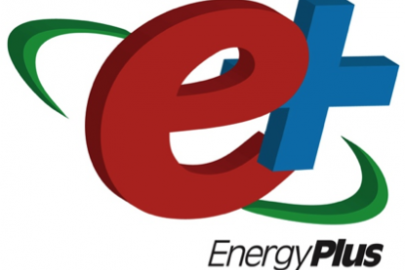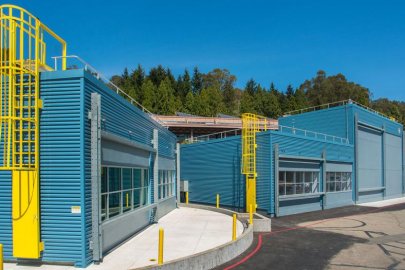BTO manages three types of of projects.
- Core projects are long-running projects based at DOE national labs.
- Competitively awarded projects are two- or three-year projects awarded either through limited solicitations to the DOE national labs or through open solicitations like the Emerging Technologies program's annual BENEFIT solicitation, Commercial and Residential Building solicitations, and DOE's Small Business Innovation and Research (SBIR) and Small Business Voucher (SBV) programs. You can learn about upcoming BTO solicitations at https://eere-exchange.energy.gov/ and about upcoming small business solicitations at https://science.osti.gov/sbir/funding-opportunities/.
- Center-led projects are associated with federally created research and development centers, usually involving DOE counterparts in foreign countries. Centers and their associated projects typically have five-year performance periods. There are currently no active center-led projects in the BEM portfolio.
All projects are prospectively merit-reviewed by external reviewers. They are also retrospectively peer-reviewed by external reviewers once or twice during their performance period. Core projects are divided into three-year performance periods for merit and peer review purposes.
Core BEM Projects
BTO's core BEM portfolio includes software that supports traditional energy-efficiency BEM applications such as energy-efficient design, code development and compliance, and incentives. It also includes projects that support the development of BEM standards.
-
 EnergyPlus is DOE's open-source state-of-the-art whole building energy simulation engine.
EnergyPlus is DOE's open-source state-of-the-art whole building energy simulation engine. -
 OpenStudio is an open-source software development kit (SDK) for energy modeling with EnergyPlus.
OpenStudio is an open-source software development kit (SDK) for energy modeling with EnergyPlus. -
 URBANopt is a simulation platform and SDK for low-energy districts and campuses supporting simulation of shared thermal systems, DERs, and microgrids.
URBANopt is a simulation platform and SDK for low-energy districts and campuses supporting simulation of shared thermal systems, DERs, and microgrids. -
 A team led by ANL will shepherd ASHRAE Standard 140 "Method of Test for BEM Programs" for the period of 2019-2021.
A team led by ANL will shepherd ASHRAE Standard 140 "Method of Test for BEM Programs" for the period of 2019-2021. -
 A team led by ANL is shepherding the development and maintenance of ASHRAE Standard 205 until Sep. 30, 2021
A team led by ANL is shepherding the development and maintenance of ASHRAE Standard 205 until Sep. 30, 2021 -
 A team led by PNNL is providing technical support and leadership to a proposed new standard for testing ruleset implementations in BEM software.
A team led by PNNL is providing technical support and leadership to a proposed new standard for testing ruleset implementations in BEM software. -
 Researchers at ANL, ORNL, and SNL are using downscaling methods to derive future weather data--both typical weather and extreme events--from IPCC global climate models. This data will support analysis at the individual building and building stock levels.
Researchers at ANL, ORNL, and SNL are using downscaling methods to derive future weather data--both typical weather and extreme events--from IPCC global climate models. This data will support analysis at the individual building and building stock levels. -
 A team led by LBNL is developing a wiki that contains task-oriented guidance for BEM tasks such as pre-design, HVAC system selection and sizing, and code compliance. This resource will support BEM professionals, many of whom are self-taught.
A team led by LBNL is developing a wiki that contains task-oriented guidance for BEM tasks such as pre-design, HVAC system selection and sizing, and code compliance. This resource will support BEM professionals, many of whom are self-taught. -
 DOE supported the AIA in the development of the 2030 Commitment Design Data Exchange (DDx). In this follow-on project, DOE and LBNL are working with large firms to collect additional project data and prototype additional analytical capabilities.
DOE supported the AIA in the development of the 2030 Commitment Design Data Exchange (DDx). In this follow-on project, DOE and LBNL are working with large firms to collect additional project data and prototype additional analytical capabilities.
Core BEM-Controls Projects
BTO's BEM-controls project portfolio includes software that bridges BEM and control workflows, primarily by supporting the direct evaluation of physically realistic control sequences. By design, this portfolio partially overlaps and reuses components of the more traditional BEM software portfolio, including the OpenStudio SDK and specific modules of the EnergyPlus BEM engines.
-
 Spawn is a next-generation BEM-controls engine based on open-standards for co-simulation (FMI) and equation-based modeling (Modelica).
Spawn is a next-generation BEM-controls engine based on open-standards for co-simulation (FMI) and equation-based modeling (Modelica). -
 OpenBuildingControl is a toolkit to improve the portability and deployability of high-performance control sequences.
OpenBuildingControl is a toolkit to improve the portability and deployability of high-performance control sequences. -
 BOPTEST is an API and set of models for testing, comparing, and benchmarking building control and fault detection and diagnosis algorithms.
BOPTEST is an API and set of models for testing, comparing, and benchmarking building control and fault detection and diagnosis algorithms. -
 Researchers at NIST, NREL, and LBNL are working with industry to develop a Semantic Modeling standard for building applications. A Semantic Model is a queryable description that allows software to "discover" the building and configure itself to it.
Researchers at NIST, NREL, and LBNL are working with industry to develop a Semantic Modeling standard for building applications. A Semantic Model is a queryable description that allows software to "discover" the building and configure itself to it.
Competitively Awarded Projects
These are one, two, or three year project awarded through one of several open competitive mechanisms including BTO's BENEFIT (Building Energy Frontiers and Innovative Technologies), DOE Office of Science's SBIR (Small Business Innovation Research) or DOE Office of Technology Transfer TCF (Technology Commercialization Fund). Successful lab-based projects sometimes graduate to "core" status.
-
 Slipstream Group and their partners will develop a modular curriculum for smart, grid-interactive energy-efficient building design and operations targeted at both engineering students and professionals.
Slipstream Group and their partners will develop a modular curriculum for smart, grid-interactive energy-efficient building design and operations targeted at both engineering students and professionals. -
 Model Predictive Control (MPC) can reduce heating and cooling energy and peak demand. Community Energy Labs (CEL) is developing a protocol for configuring grey-box MPC for academic buildings, many of which cannot afford expensive control systems.
Model Predictive Control (MPC) can reduce heating and cooling energy and peak demand. Community Energy Labs (CEL) is developing a protocol for configuring grey-box MPC for academic buildings, many of which cannot afford expensive control systems. -
 LBNL researchers are developing methods by which sensing can complement and enhance building energy modeling.
LBNL researchers are developing methods by which sensing can complement and enhance building energy modeling. -
 PNNL researchers are developing a simplified version of the ASHRAE 90.1 PRM suitable for small building projects with small modeling budgets.
PNNL researchers are developing a simplified version of the ASHRAE 90.1 PRM suitable for small building projects with small modeling budgets. -
 LBNL researchers are using FLEXLAB to generate detailed datasets for energy simulation validation with an emphasis on internal loads and radian
LBNL researchers are using FLEXLAB to generate detailed datasets for energy simulation validation with an emphasis on internal loads and radian -
 ORNL, NREL, and NIST researchers are using three well-instrumented test facilities to generate empirical validation datasets for ASHRAE Standard 140.
ORNL, NREL, and NIST researchers are using three well-instrumented test facilities to generate empirical validation datasets for ASHRAE Standard 140. -
 ANL researchers are analyzing and packaging empirical validation data from ETNA guarded house experiments for inclusion into ASHRARE Standard 140.
ANL researchers are analyzing and packaging empirical validation data from ETNA guarded house experiments for inclusion into ASHRARE Standard 140. -
 In this SBIR phase II project, Ladybug Tools is adding energy modeling to their Pollination cloud service.
In this SBIR phase II project, Ladybug Tools is adding energy modeling to their Pollination cloud service.
Completed Projects
-
Calibrated energy models support building retrofits and operations, but are not common due to the cost and uncertain fidelity of calibration. ENERlite consulting is developing a guided calibration tool for grey-box models.
-
Utilities need to leverage demand flexibility (DF) in order to maximize renewable integration. OptiMiser will integrate EnergyPlus into its auditing tool allowing it to identify customers for DF programs and measure packages for those customers.
-
In this phase II, Maalka Inc. will continue developing and deploying platform for integrating BEM into portfolio-scale EE programs.
-
PNNL researchers are developing a framework for designing systems with increased energy flexibility based on system-control co-design methodology.
-
A team led by LBNL and ORNL is undertaking a three-year effort to reduce EnergyPlus execution time by a factor of 10!
-
Researchers at LBNL and ORNL are adding moisture transfer modeling capabilities to the popular 2D/3D heat transfer program THERM.
-
Researchers at UC-Boulder are creating an open-source tool for simultaneously optimizing cooling and airflow in data-centers and computer rooms.
-
A team led by the Bay Area Association of Governments is using OpenStudio to prioritize retrofit projects for small and medium commercial buildings.
-
ORNL researchers worked with the Electric Power Board (EPB) of Chattanooga to develop a digital twin of every building in the service territory.
-
This project leverages well-characterized, well-instrumented test facilities at ORNL and LBNL to empirically validate BEM engines like EnergyPlus.
-
A team led by LBNL researchers is developing a toolkit to improve the portability and deployability of high-performance control sequences.
-
Lead Performer: -- National Renewable Energy Laboratory - Golden, CO-- J. Neymark & Associates - Golden, CO-- Lawrence Berkeley National Laboratory (LBNL) - Berkeley, CA
-
A team led by LBNL and IIIT-Hyderabad is working on a range of use-cases including early-stage design, code compliance, and model-predictive control.
-
BuildSimHub will add energy simulation and calibration capabilities to their git-based model management platform.
-
GARD Analytics will develop algorithms and an online tool for generating energy models from program owner requirements.
-
Maalka will add energy simulation and ECM evaluation capabilities to their building energy data platform.
-
Ladybug Tools will use DOE's Radiance lighting engine to develop a cloud-based daylighting simulation service.
-
Prisere will add energy modeling to its analytical workflow to allow insurance and reinsurance companies to properly value energy-efficiency.
-
EnergyAnalytics LLC will leverage OpenStudio SDK to help automate the energy performance contracting process for microgrid projects.
-
Vistar Energy will develop XeroHome, a web-based incremental energy modeling workflow for residential energy-efficiency improvements.
-
Golden Analytics will develop more accurate energy model calibration algorithms by leveraging high-level parameters and temporal disaggregation.
-
Students at the University of California-Davis will develop data-driven models for advanced rooftop air conditioners for EnergyPlus.
-
LBNL researchers are developing inverse modeling algorithms to recover infiltration rates and internal thermal mass from zone temperature streams.
-
Small business Big Ladder Software of Denver will develop content for training and support services offerings for DOE's BEM engine EnergyPlus.
-
Small business ThermoAnalytics of Calumet, MI is developing analysis algorithms to extract envelope thermal properties from infrared (IR) images.
-
Small business Energy Analytics of Avon, CT will use DOE's OpenStudio platform to integrate M&V into the building design and construction process.
-
NREL is working with RMI and IBPSA-USA to develop online resources for energy modelers and their clients, including architects and building owners.
-
A team led by researchers at ORNL is developing algorithms for automatically calibrating energy models to exceed ASHRAE guideline 14 requirements.

